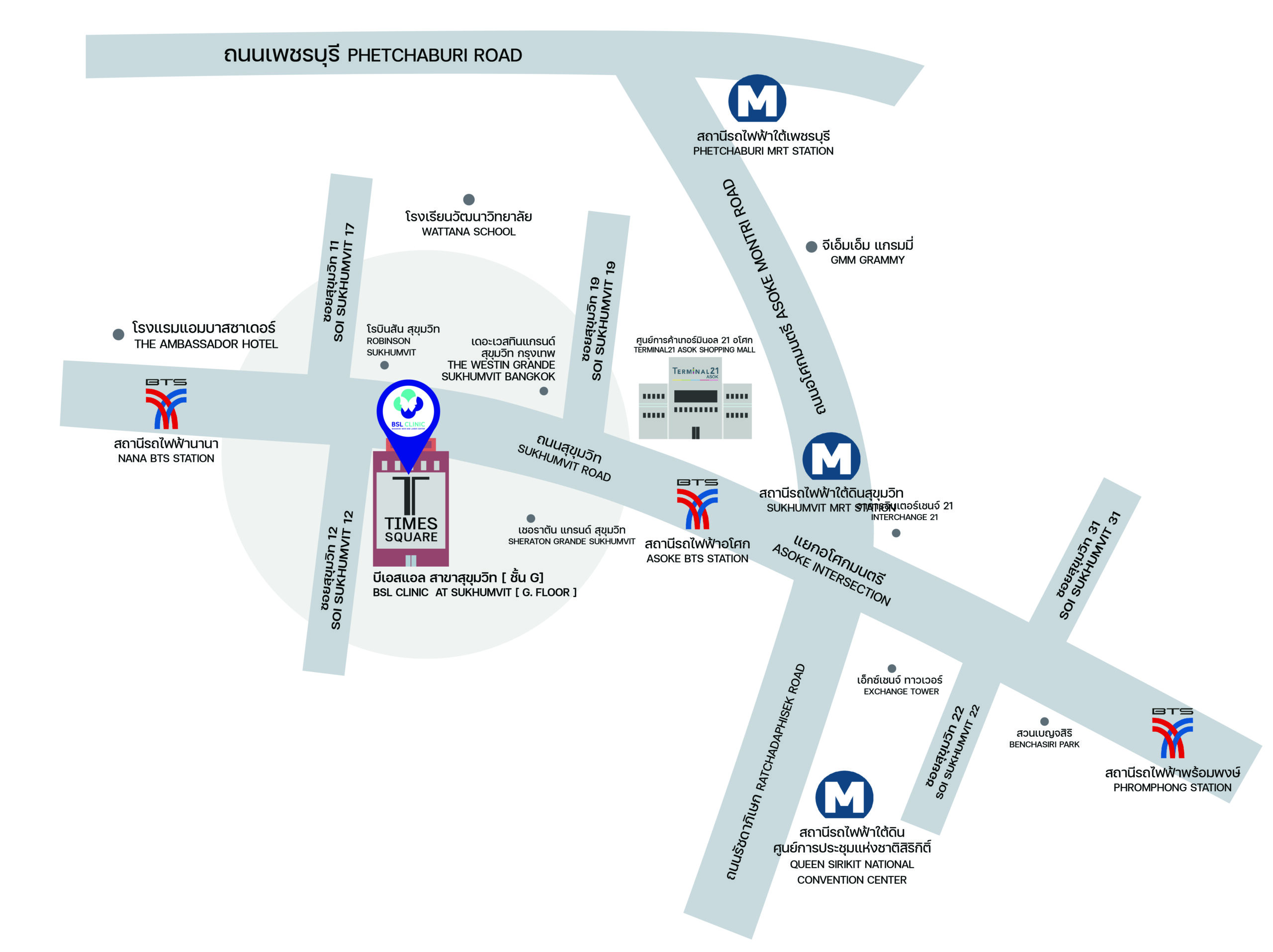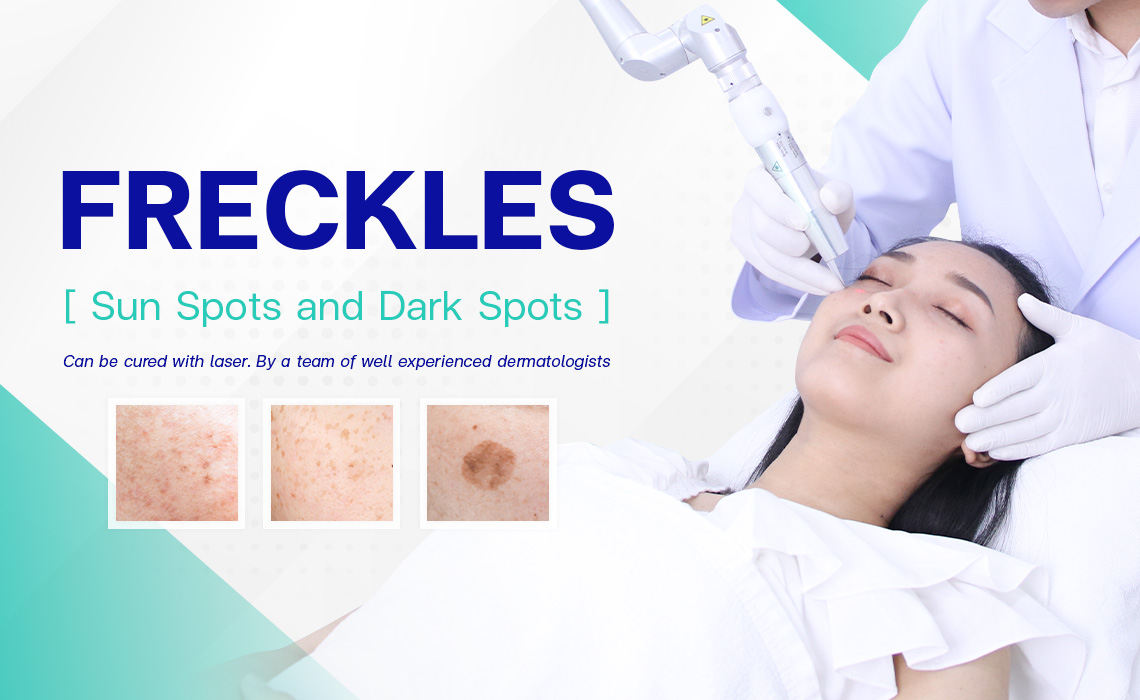
Why seek treatment at BSL Clinic?
- Skin condition can be significantly improved
- Bright and smooth skin in appearance
- No required downtime
- Skin thinning will not occur after treatment
- Freckles will disappear after treatment
- A highly safe treatment
- A long-term solution
Some methods of underarm hair removal can cause damage to the skin.
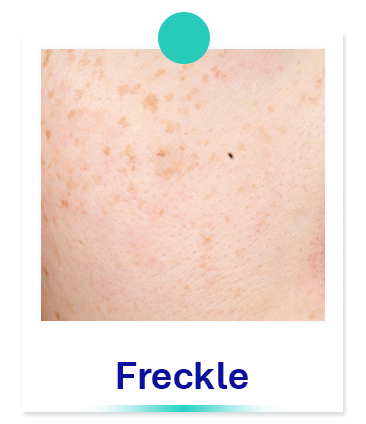
Freckle (ephelis) – small, flat and light brown spots appearing on the skin. It is darker in colour than the surrounding skin. Having the skin continuously exposed to the sun’s Ultraviolet (UV) radiation will increase the occurrence of freckles. It is commonly found in individuals with fair, light skin and hair complexions. It is distributed over the cheekbones, nose, face, shoulder and upper arm areas.

Hori’s nevus – light brown spots and found in women of Asian ancestry between the ages of 20 to 30 years old. It is situated on both sides above the cheekbones.
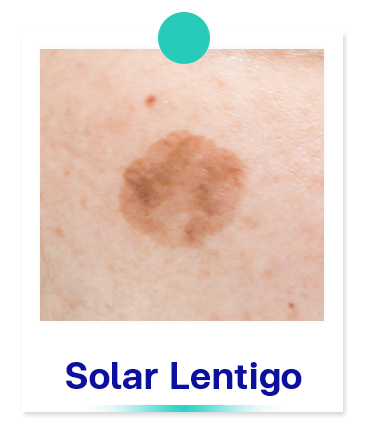
Solar lentigo – brown spots appearing on the face, arm, back of hand or areas exposed to direct sunlight and is found in middle aged and elderly individuals.
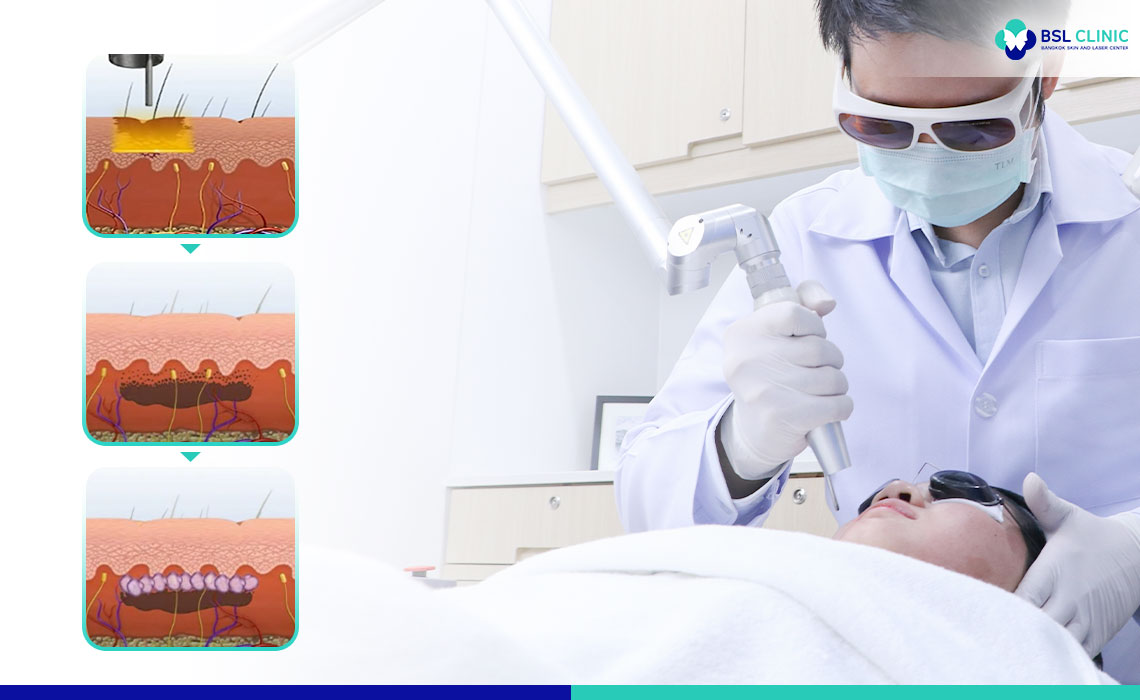
Treatment Methods
Specific types of advanced laser technologies are utilised for the treatment of freckles, hori’s nevus and solar lentigo. The main types of advanced technologies utilised by BSL Clinic are the combination of the pigment reduction and pigment removal lasers. The laser pulls the pigment off the skin to reveal a smooth and radiant complexion. The utilisation of specific pigment lasers is able to deter the growth of melanin pigmentation, restricts the development of black marks (PIH) and prevents the darkening of pigments.


Freckle Treatment
Pigment laser treatments can heal freckles through eliminating melanin pigment, the main cause of freckles. A combination of the pigment reduction and pigment removal takes approximately 3 treatments to generate the fading of pigments.

Hori's Nevus Treatment
The treatment of hori’s nevus must be treated effectively through BSL Clinic’s highly experienced dermatologists to gain positive results. Laser beams penetrate the skin breaking the pigments down into small granules; then, the white blood cells will remove these pigmented granules, reducing black spots and preventing the pigments from becoming darker. The surrounding skin is not affected and will not become thinner or sensitive during pigment treatment. Smooth and bright skin is the treatment results. It takes about 6 treatments to extract the broken pigments out of the skin.

Solar Lentigo Treatment
Solar lentigo can be healed completely, and the types of laser treatment for pigment removal depend on the area including the face, shoulders, back or torso. It takes about 1 to 3 sessions to treat the solar lentigo. It takes between 7 to 14 days for treatment results to appear clearly.
- Dermal melasma
- Freckles
- Solar lentigo (sun spots)
- Epidermal
- Senile lentigo (age spots)
- Café au lait birthmarks
- Nevus of ota
- Nevus spilus
Treatment Timeframe

There are 4 stages that involve the prevention of new melanin production:
- Inhibition of pigment
- Reducing amount of tyrosinase
- Preventing tyrosinase activity
- Blocking melanin transfer into keratinocytes
After Treatment Precautions
There is no downtime required, and the patient can immediately return to their daily activities. The appearance of a minor pinkish shape will occur and will diminish within 24 hours. The patient should not scrub but wash their face normally. Avoiding sun exposure for 5 to 7 days is necessary after treatment. However, if the patient is directly exposed to the sun, sunscreen must be applied for skin protection.
Dog Training Expert: Ms Rungjit
Ms Rungjit, an expert in dog training is constantly exposed to the sun’s dangerously high Ultraviolent (UV) radiation and has grave concerns about her skin. She has a skin condition known as freckles (ephelis), found in individuals with fair, light skin and hair complexions. Ms Rungjit became a patient of BSL Clinic to begin her skin treatments and the results produced exceed her expectations. It is vital that the use of sunscreen is applied onto the skin directly before being exposed to sunlight. This prevents the skin from further harm and minimises the development of unwanted freckles.

The main types of advanced technologies utilised by BSL Clinic are the combination of the pigment reduction and pigment removal lasers.
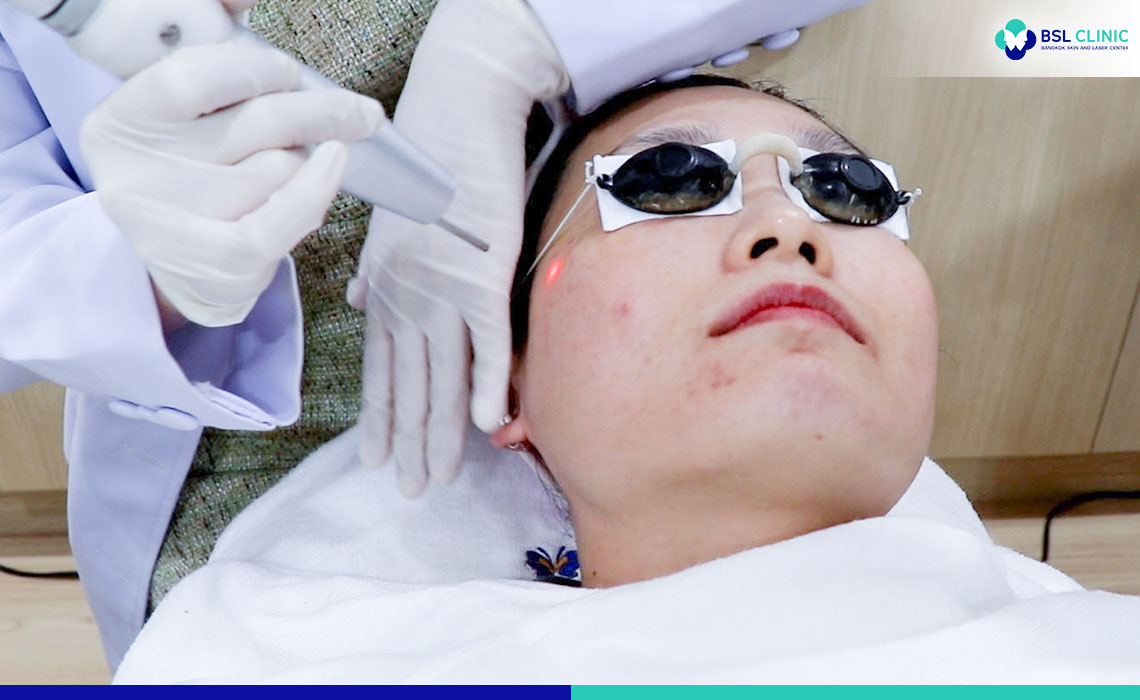
Pigmented reduction laser
Laser beams penetrate the skin breaking the pigments down into small granules, after which the white blood cells will remove these pigmented granules, thus reducing black spots and preventing the pigments from becoming darker. The surrounding skin is not affected and will not become thinner or sensitive during pigment removal treatment. Smooth and bright skin are the treatment results.
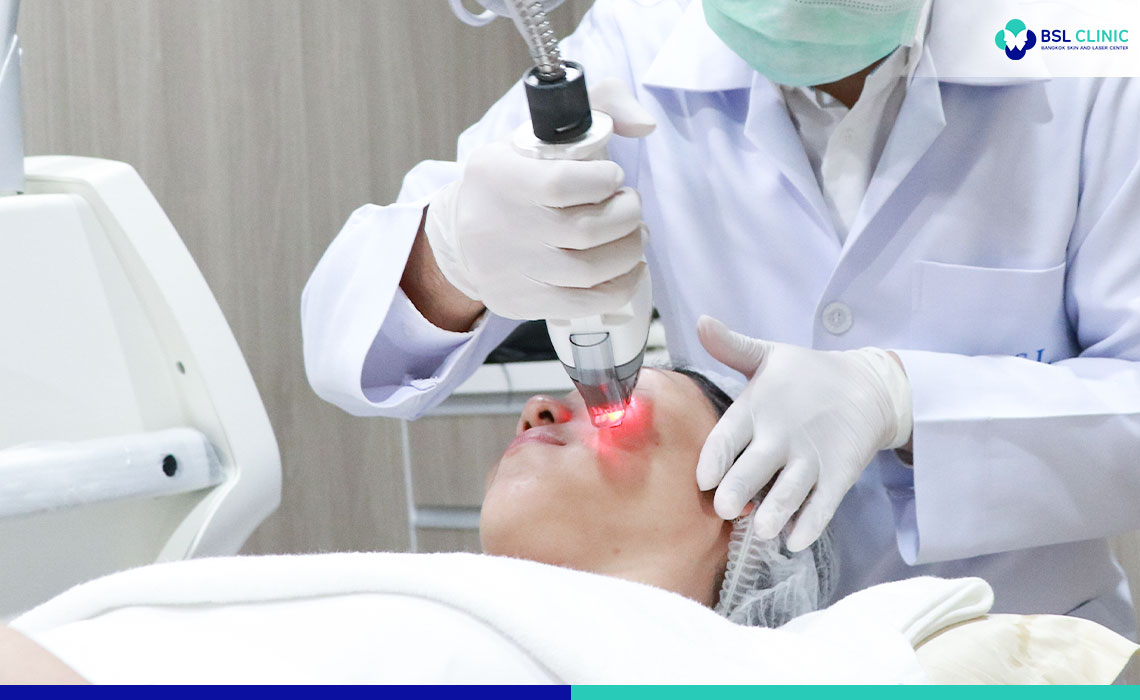
Pigmented removal laser
The laser pulls the pigment off the skin to reveal a smooth and radiant complexion. The utilisation of specific pigmentation removal laser is able to deter the growth of melanin pigmentation; this restricts the development of black marks (PIH) and prevents the darkening of pigments.

It takes about 3 treatments to extract the broken pigments out of the skin. The light brown spots begin to disappear and the overall appearance of the skin brightens.



Patient’s Treatment at BSL Clinic
A patient presented to BSL Clinic’s dermatologists for the treatment of various skin conditions including freckles, hori’s nevus and seborrheic keratosis that have dispersed across both her cheekbones.

Freckles, Hori’s Nevus and Seborrheic Keratosis: The reason the surface of the skin is uneven is due to the breakdown in melanin pigmentation.



Confidence Boost
A patient presented to BSL Clinic with both freckles and solar lentigo skin conditions for treatment. She became uncomfortable in social situations and had anxiety in meeting new people. In the past she heavily used make-up foundations to conceal her skin conditions, but this was not a long-term solution. After undergoing treatment, it produced positive outcomes for her as the patient’s freckles and solar lentigo diminished. It gave the patient a new-found sense of self-confidence.

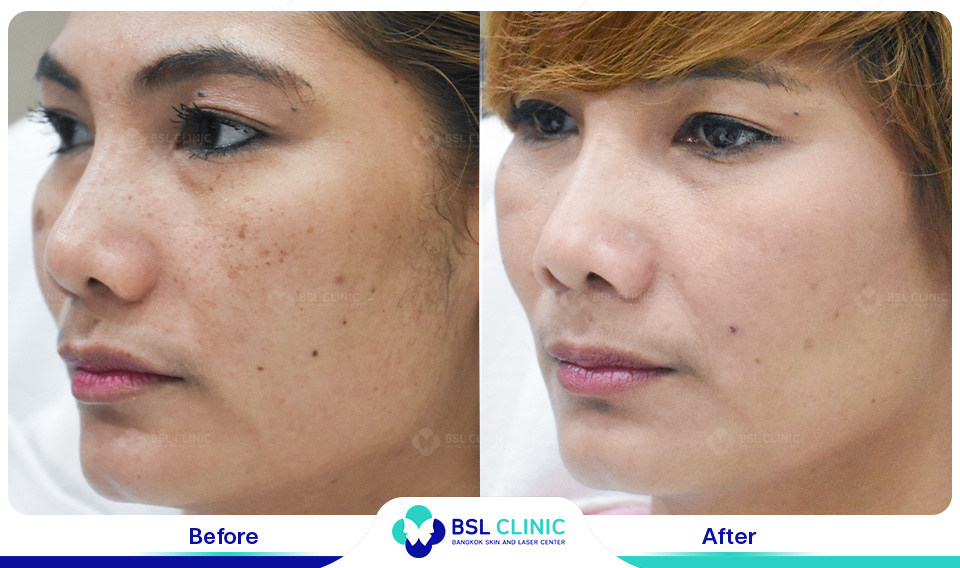
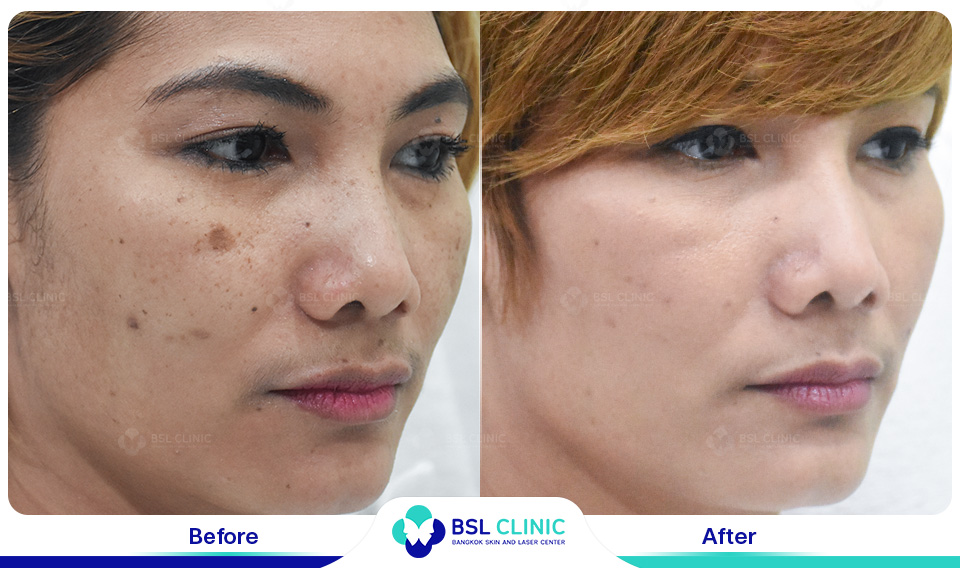

Why seek treatment at BSL Clinic?
- Skin condition can be significantly improved
- Bright and smooth skin in appearance
- No required downtime
- Skin thinning will not occur after treatment
- Freckles will disappear after treatment
- A highly safe treatment
- A long-term solution
Common Types of Skin Hyperpigmentation

Freckle (ephelis) – small, flat and light brown spots appearing on the skin. It is darker in colour than the surrounding skin. Having the skin continuously exposed to the sun’s Ultraviolet (UV) radiation will increase the occurrence of freckles. It is commonly found in individuals with fair, light skin and hair complexions. It is distributed over the cheekbones, nose, face, shoulder and upper arm areas.
Hori’s nevus – light brown spots and found in women of Asian ancestry between the ages of 20 to 30 years old. It is situated on both sides above the cheekbones.
Solar lentigo – brown spots appearing on the face, arm, back of hand or areas exposed to direct sunlight and is found in middle aged and elderly individuals.
Treatment Methods

Specific types of advanced laser technologies are utilised for the treatment of freckles, hori’s nevus and solar lentigo. The main types of advanced technologies utilised by BSL Clinic are the combination of the pigment reduction and pigment removal lasers. The laser pulls the pigment off the skin to reveal a smooth and radiant complexion. The utilisation of specific pigment lasers is able to deter the growth of melanin pigmentation, restricts the development of black marks (PIH) and prevents the darkening of pigments.
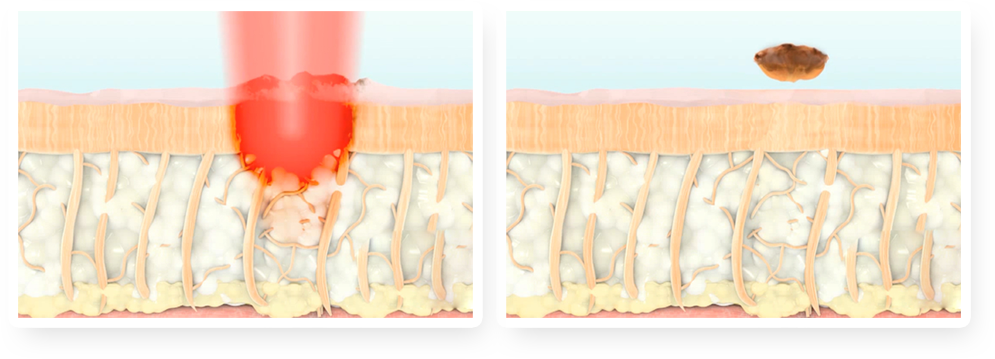
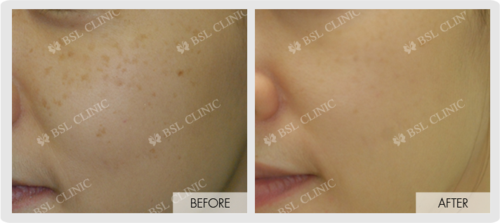
Freckle Treatment
Pigment laser treatments can heal freckles through eliminating melanin pigment, the main cause of freckles. A combination of the pigment reduction and pigment removal takes approximately 3 treatments to generate the fading of pigments.
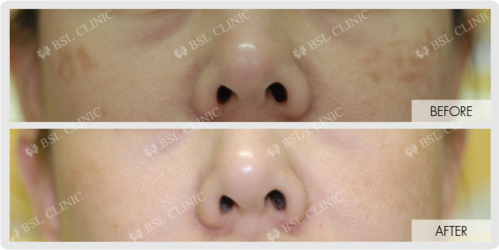
Hori’s Nevus Treatment
The treatment of hori’s nevus must be treated effectively through BSL Clinic’s highly experienced dermatologists to gain positive results. Laser beams penetrate the skin breaking the pigments down into small granules; then, the white blood cells will remove these pigmented granules, reducing black spots and preventing the pigments from becoming darker. The surrounding skin is not affected and will not become thinner or sensitive during pigment treatment. Smooth and bright skin is the treatment results. It takes about 6 treatments to extract the broken pigments out of the skin.

Solar Lentigo Treatment
Solar lentigo can be healed completely, and the types of laser treatment for pigment removal depend on the area including the face, shoulders, back or torso. It takes about 1 to 3 sessions to treat the solar lentigo. It takes between 7 to 14 days for treatment results to appear clearly.
- Dermal melasma
- Freckles
- Solar lentigo (sun spots)
- Epidermal
- Senile lentigo (age spots)
- Café au lait birthmarks
- Nevus of ota
- Nevus spilus

There are 4 stages that involve the prevention of new melanin production:
- Inhibition of pigment
- Reducing amount of tyrosinase
- Preventing tyrosinase activity
- Blocking melanin transfer into keratinocytes
After Treatment Precautions
There is no downtime required, and the patient can immediately return to their daily activities. The appearance of a minor pinkish shape will occur and will diminish within 24 hours. The patient should not scrub but wash their face normally. Avoiding sun exposure for 5 to 7 days is necessary after treatment. However, if the patient is directly exposed to the sun, sunscreen must be applied for skin protection.
Dog Training Expert: Ms Rungjit

Ms Rungjit, an expert in dog training is constantly exposed to the sun’s dangerously high Ultraviolent (UV) radiation and has grave concerns about her skin. She has a skin condition known as freckles (ephelis), found in individuals with fair, light skin and hair complexions. Ms Rungjit became a patient of BSL Clinic to begin her skin treatments and the results produced exceed her expectations. It is vital that the use of sunscreen is applied onto the skin directly before being exposed to sunlight. This prevents the skin from further harm and minimises the development of unwanted freckles.
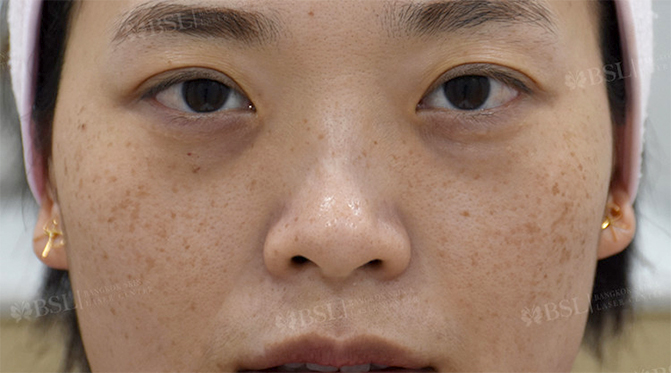
The main types of advanced technologies utilised by BSL Clinic are the combination of the pigment reduction and pigment removal lasers.

Laser beams penetrate the skin breaking the pigments down into small granules, after which the white blood cells will remove these pigmented granules, thus reducing black spots and preventing the pigments from becoming darker. The surrounding skin is not affected and will not become thinner or sensitive during pigment removal treatment. Smooth and bright skin are the treatment results.

The laser pulls the pigment off the skin to reveal a smooth and radiant complexion. The utilisation of specific pigmentation removal laser is able to deter the growth of melanin pigmentation; this restricts the development of black marks (PIH) and prevents the darkening of pigments.
The results?

It takes about 3 treatments to extract the broken pigments out of the skin. The light brown spots begin to disappear and the overall appearance of the skin brightens.

Patient’s Treatment at BSL Clinic
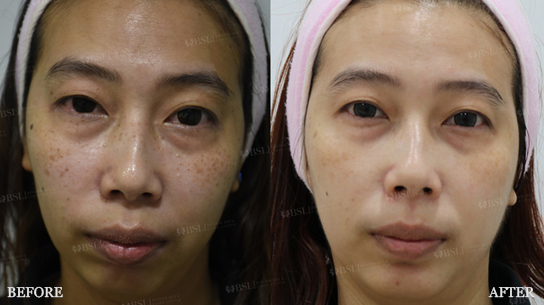
A patient presented to BSL Clinic’s dermatologists for the treatment of various skin conditions including freckles, hori’s nevus and seborrheic keratosis that have dispersed across both her cheekbones.
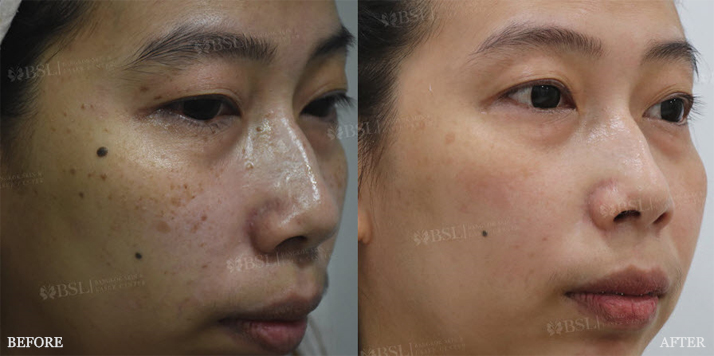
Freckles, Hori’s Nevus and Seborrheic Keratosis: The reason the surface of the skin is uneven is due to the breakdown in melanin pigmentation.

Confidence Boost
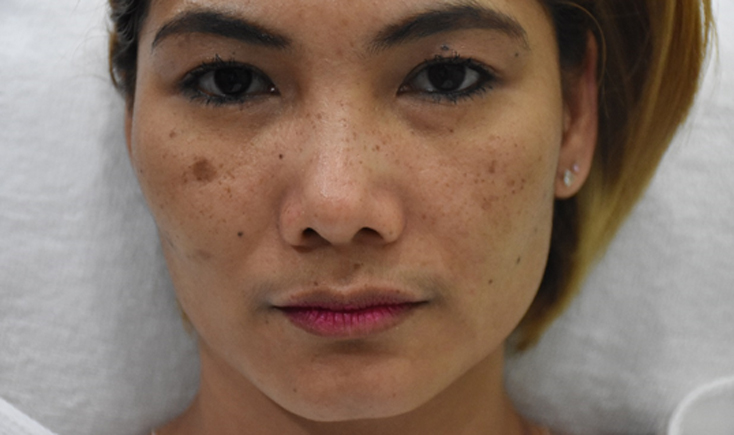
A patient presented to BSL Clinic with both freckles and solar lentigo skin conditions for treatment. She became uncomfortable in social situations and had anxiety in meeting new people. In the past she heavily used make-up foundations to conceal her skin conditions, but this was not a long-term solution. After undergoing treatment, it produced positive outcomes for her as the patient’s freckles and solar lentigo diminished. It gave the patient a new-found sense of self-confidence.





